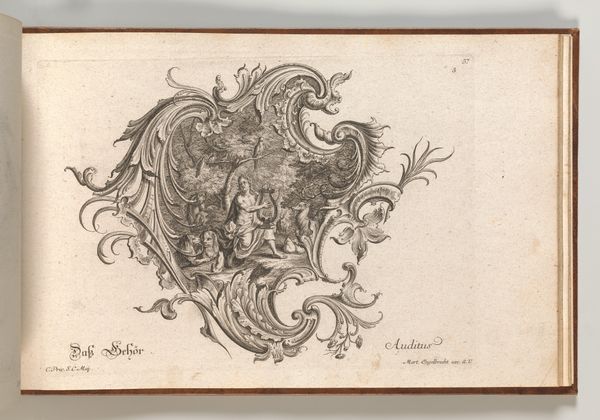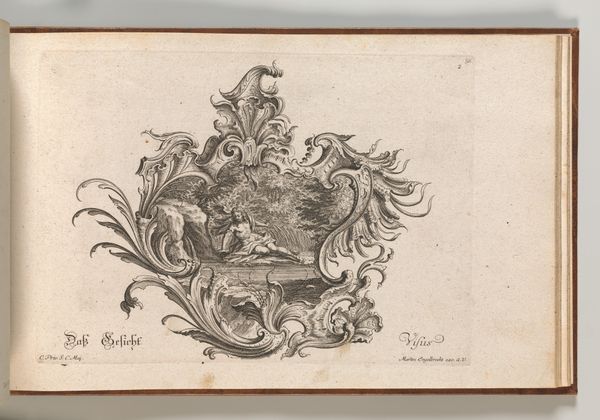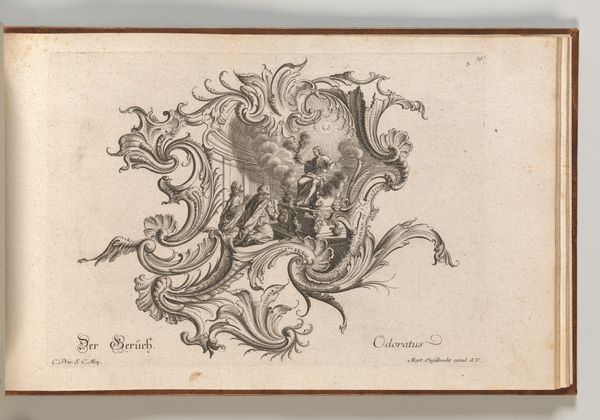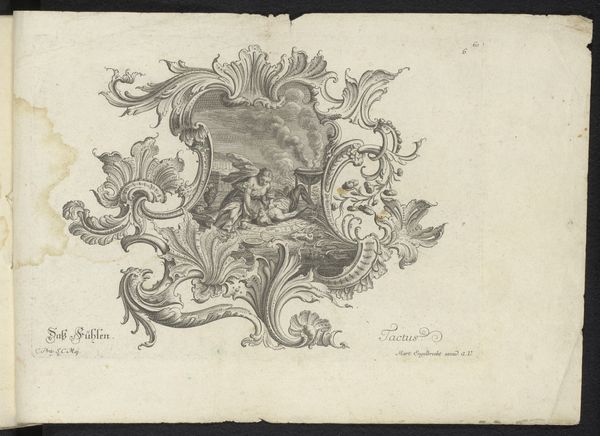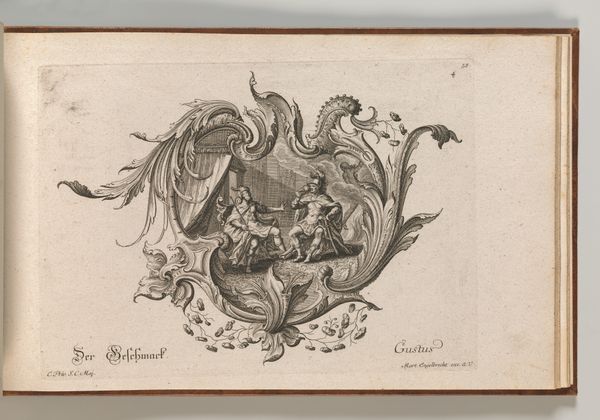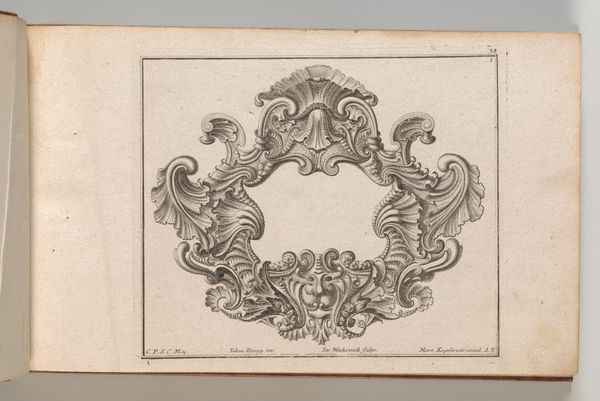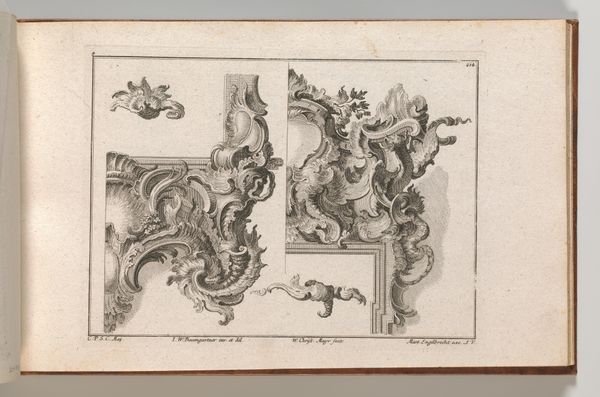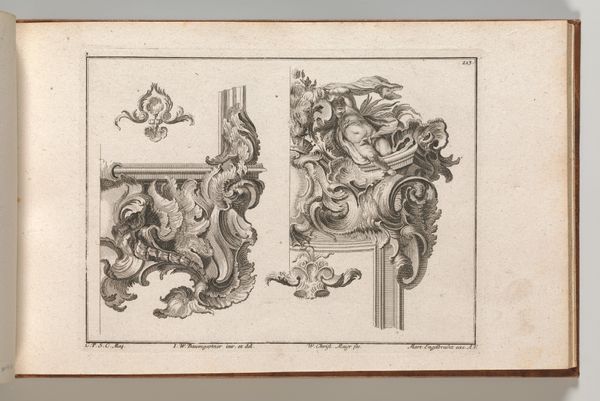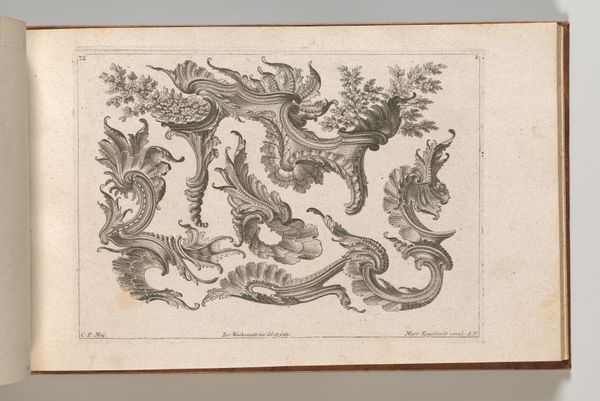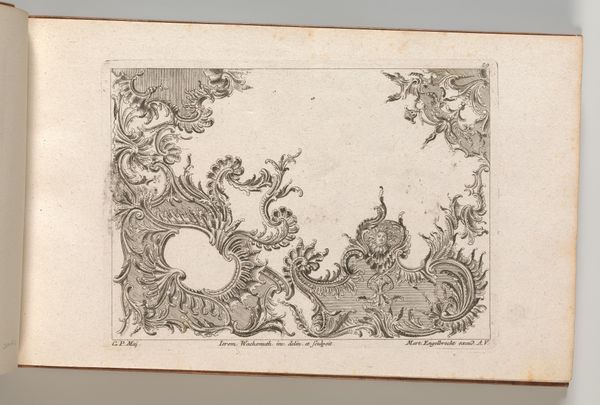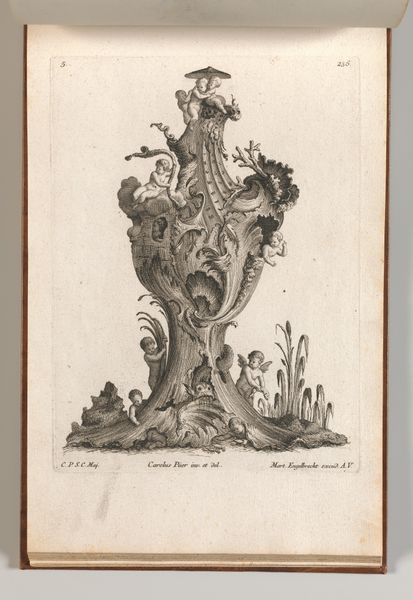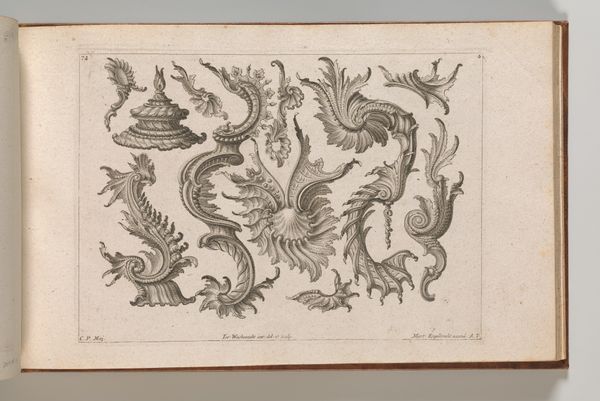
Design for a Cartouche, Plate 6 from 'Neu Inventierte auf die artigste Facon Sehr nutzliche Schild.' 1745 - 1755
0:00
0:00
drawing, print, engraving
#
drawing
#
allegory
#
baroque
# print
#
history-painting
#
decorative-art
#
engraving
Dimensions: Overall: 8 7/16 × 13 3/4 in. (21.5 × 35 cm)
Copyright: Public Domain
Curator: Here we have “Design for a Cartouche, Plate 6 from 'Neu Inventierte auf die artigste Facon Sehr nutzliche Schild.'” This print by Johannes Rumpp, dating from between 1745 and 1755, presents a complex symbolic structure within the Baroque decorative style. Editor: My initial response is one of subdued drama. The monochrome palette and dense ornamentation lend an air of solemnity to what I imagine was meant to be an emblem of importance, like an invitation. Curator: The image’s placement in a series gives us valuable context. Cartouches, as decorative frames, often signified power and importance, literally framing messages for public consumption. Their content was designed to convey authority. The figures and burning pyre speak to larger narrative concerns. Editor: Absolutely, and the careful selection of those swirling, leaf-like patterns seems significant. The border around the central scene really channels the viewers' focus to it. It strikes me that those scrolling forms may relate directly to how perception works. Can you expand a little bit on how this burning altar affects the theme? Curator: Given the cartouche’s role in proclaiming power, the central scene might present a morality tale of sorts. Perhaps of sacrifice. The figure beside the fire and the way that they're positioned indicates loss. Remember the context: 18th-century Europe was fraught with shifts in power, religious upheaval, and early colonial conflict. This may reference those issues. Editor: I'm stuck by how familiar and immediate I feel that those Baroque curls seem, even in 2024! As a visual language they feel both modern and completely locked into history. I do agree about sacrifice too, maybe specifically how sacrifice affects our relations in larger social structures. Curator: Yes, thinking through our contemporary understanding, these motifs show that our cultural history continues to shape the visuals and the values that resonate. These designs are potent markers that transcend the specifics. Editor: In looking at it from an iconographic viewpoint, and knowing what you do from the Activist lens, has truly helped deepen my understanding of the way we build memory as communities and individuals. Curator: For me too. The symbolism and visual languages speak to the complex power dynamics alive and potent, still.
Comments
No comments
Be the first to comment and join the conversation on the ultimate creative platform.
